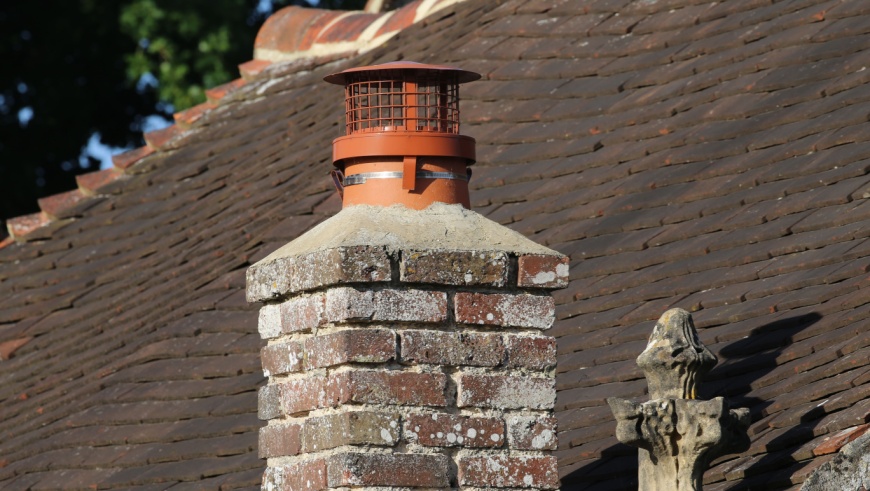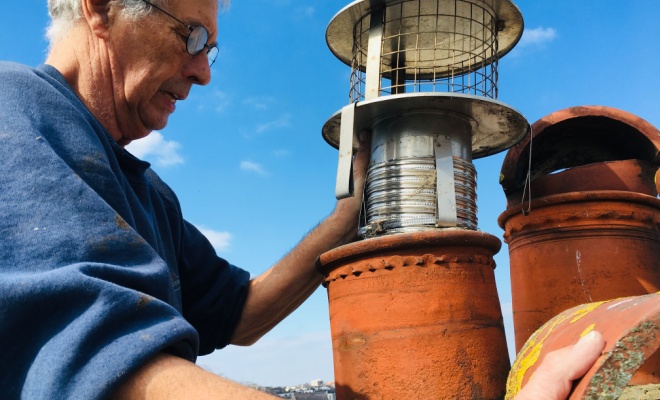Chimney Cowl Fitting Cost
Last updated 16th April, 2025
Would you like to find out how much chimney cowl fitting will cost?
In this ultimate cost guide, we cover all you need to know about having chimney cowls fitted, including prices of materials, labour fees and time frames. On average, you should expect to pay at least £250, including the chimney cowl fitters cost.
For more information on fitting a chimney cowl - read below!

How Much To Fit a Chimney Cowl?
The average cost of having a chimney cowl fitted will depend mainly upon the height of the chimney (most chimneys can be reached with a roof ladder).
Are there any additional costs to consider?
If the cost of scaffolding hire or a hydraulic mobile elevated work platform is added to the overall price, this could increase the costs significantly and make it more economical to have other jobs done at the same time.
But as a rough guide assuming no scaffold, then to supply and install a multi-fuel cowl on a chimney with easy access should cost around £250.
An experienced tradesmen shouldn't have any problem fitting a chimney cowl and will usually only take 1-2 hours at most.
Table of Contents
Chimney Cowl Fitting Prices
Here are a few average costs for installing a chimney cowl:
| Type of Cowl | Scaffolding? | Avg. Cost | Duration |
|---|---|---|---|
| Specific Cowl | No | £165 | 1 hour |
| Multi-Purpose Cowl | No | £200 | 1 hour |
| Specific Cowl | Yes | £250 | 2 hours |
| Multi-Purpose Cowl | Yes | £375 | 2 hours |
Cost Breakdown
Individual costs for installing a multi-purpose cowl on a chimney with no scaffolding required, just a roof ladder - Total Cost: £250
Materials
£82
Tradesmen
£168
Scaffolding
£0
What is a Chimney Cowl For?
A chimney cowl is fitted when an open chimney pot might cause problems for your home.
There are some common reasons why homeowners fit chimney cowlings such as:
- Keeping birds and squirrels out of the chimney.
- Stopping rain directly entering the home through the chimney.
- Preventing downdraughts where smoke and fumes blow back into the house.
- Reducing the build-up of leaves or debris in the flue.
- Providing ventilation for unused chimneys to avoid condensation building up.
If you've experienced any of these issues, it might be worth considering whether fitting a chimney cowl could prevent further problems.
What Types of Chimney Cowl Are There?
Different types of chimney cowls are available to address specific issues.
For example, if you have a problem with birds entering the flue, getting a cowl with a bird guard is a good option.
Here are some chimney cowl types to be aware of:
| Type of Cowl | Purpose |
|---|---|
| Bird Guard Cowl | Protects flue from nesting birds |
| Anti-downdraught Cowl | Prevents wind from blowing fumes back into the home |
| Rain Cowl | Stops rainwater entering the chimney |
| Gas Terminal Cowl | Ensures gas fires vent safely |
| Solid Fuel Cowl | Handles high-heat fuels such as coal and wood |
| Ventilation Cowl | Helps an unused chimney avoid condensation |
| Rotating Cowl | Improves the draw of the chimney |
If a specific chimney cowl doesn't suit your needs, there are also multi-purpose chimney cowls available.
As the name suggests, these serve a variety of functions and can be useful if you have multiple chimney issues or simply want to cover all bases.
The multi-purpose type cowl normally has a bird cage inside it to prevent birds entering the chimney. If you are burning solid fuels like coal then normally this cage should be removed to prevent it becoming blocked with solid fuel remnants and burnt carbon.
The price difference between specific and multi-purpose chimney pot cowlings isn't usually that much, so it could make sense just to go for the multi-purpose option.
Labour Costs and Time Frames
Fitting one chimney cowl is quite a straightforward job, so if you hire a roofer to do this job he will probably apply a minimum price to cover their time on the job, travel time, and fuel costs.
This type of pricing is applied to many small jobs, as it is not worth them coming to your property for a 20 minute job if they can only charge for their time. So if possible get other small roofing jobs carried out at the same time.

Additional Chimney and Roof Jobs
You can save money when installing a chimney cowl by combining it with other roofing work.
Here are some examples of extra jobs and average pricing to consider:
| Job Type | Average Cost |
|---|---|
| Repoint a Chimney | £300 - £700 |
| Replace Chimney Flashing | £250 - £300 |
| Sweep Chimney | £60 - £100 |
| Remove Roof Moss | £400 - £800 |
| Treat Roof | £250 - £600 |
| Replace Roof Tiles | £150 - £300 |
| Clean Guttering | £40 - £120 |
Can You Fit a Chimney Cowl Yourself?
If you're confident working at height, it's possible to save yourself a bit of money and fit a chimney cowl yourself.
One of the more common mistakes when fitting chimney cowls is to fit them on the wrong chimney pot! Yes, it sounds like a silly obvious mistake - but it happens all the time.
If fitting the cowl yourself then you need to ensure you have identified the right chimney pot to work on by carrying out a simple smoke test - the last thing you want to do is fit a new cowl on your neighbours chimney pot free of charge!
As with any roofing jobs, if doing this yourself you need to take care working at height and ensure you are using the correct safety equipment.
FAQs
In addition, birds love nesting in chimneys, and have a habit of flying unexpectedly into your living room creating mess everywhere! Multi-purpose cowls prevent even small birds from being able to access the chimney, but please note that they should only be fitted when the birds have left the nest, not before!
The revolutionary Windkat system offers an anti-downdraught feature without moving parts and works well to regulate the draw even in high winds, thereby providing optimum burning conditions and increased efficiency.










